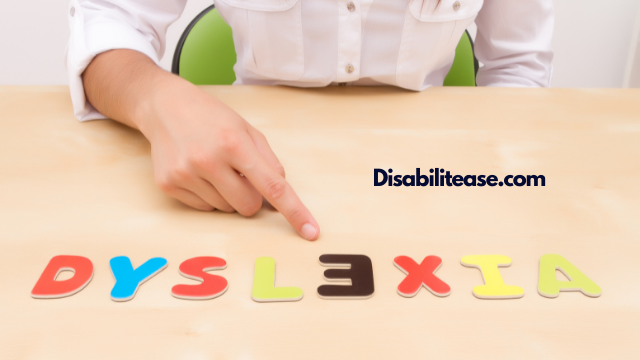Dyslexia is a learning difficulty that impacts a person’s ability to read, write and spell effectively. It is characterized by slower, less accurate, and effortful reading despite receiving extensive schooling, support, and remedial practices.
The condition typically happens due to a deficit within the part of the brain responsible for recognizing, understanding, and memorizing written material, including words, digits, and symbols.

As a neurological disorder, it comes with various subtypes involving unique symptoms and difficulties and an expert diagnosis is required to know what type of dyslexia do you have.
Previously, Dyslexia was believed to be a language processing disorder where the brain found it difficult to understand alphabets, words, and sentences.
Here is a related article that might interest you on 10 Worst Fonts For Dyslexia: The Ultimate Guide.
However, it is now further divided into two important subtypes that help parents, educators, and psychologists understand and treat Dyslexia more effectively.
While a professional assessment with the help of speech-language pathologists and psychologists is the best way to diagnose Dyslexia, knowing more about your condition can help you receive more appropriate care.
Table of Contents
What Type of Dyslexia Do I Have?
The common subtypes and their symptoms are explained below.
Visual Dyslexia
Visual Dyslexia hinders an individual’s ability to recognize the visual structure of various written material and extract meaning out of it.
Every brain goes through a sequence of scanning, recognizing, and understanding the shape of letters before they can be read. Individuals with Dyslexia do not have this ability and struggle to make sense of different letters, words, and digits even if they have read them previously.
This is because affected individuals are unable to store the visual structure of each letter and attach meaning to it for future retrieval. For example, they may know the sound of the letter “a” but forget what it looks like. This makes it difficult for them to spell out the word or recognize it as the letters seem brand new to them. You may have Visual Dyslexia if you have the following symptoms:
- Confusing letters, words, and digits with similar appearances, such as mistaking “u” for “n”, or “bag” for “lag”.
- Reversing mirrored letters and words when writing or reading, such as mistaking “p” for “q” or “tap” for “pat” and “6” for 9”.
- Having problems making sense of visual sequences and recreating a sequence from visual memory.
Auditory Dyslexia
Auditory Dyslexia is also known as phonological Dyslexia due to its impact on phonological awareness. Every person learns to recognize words and attach meaning to them with the help of Phonemes.
These are unique sounds attached to each letter that gives it its identity. The condition impairs this ability to recognize these phonemes and makes reading difficult. Affected individuals usually have no trouble reading the words in their mind and understanding the written material.
Their reading performance only becomes slow and effortful when reading out loud. You may have auditory Dyslexia if you have the following symptoms:
- Difficulty spelling out a sequence of phonemes in different words.
- Showing slower speed when reading longer or more complicated words.
- Messing up multi-syllabic words such as reading out “magazine” as “mazageen”.
- Reading is more effortless when done silently than orally.
- Difficulty in blending different phonemes to spell out a word quickly and accurately.
Double Deficit Dyslexia
Double-deficit Dyslexia is when affected individuals have symptoms of both visual and auditory Dyslexia. The condition causes some of the most severe cases of Dyslexia, and affected individuals often show great lag between each word read.
If you experience difficulty understanding both letters and the sounds attached to them, you may have Double-deficit Dyslexia.
Dyslexia Classifications
Besides common subtypes, there are also two distinct classifications that divide Dyslexia based on the root cause of its presence. Most cases of Dyslexia are inherited from parents or another underlying gene abnormality.
What led to your Dyslexia can also affect the treatments and interventions that will prove suitable later on. For this reason, it’s important to understand these classifications as well. These are explained below.
Developmental Dyslexia
This is the most common subtype of Dyslexia and affects more than 15 percent of the world population. Developmental Dyslexia is inherited from an affected family member, usually the parents.

Experts estimate that 50 percent of children with a dyslexic parent inherit the condition. It typically affects the language processing abilities of a child and manifests in the form of auditory Dyslexia.
Symptoms related to visual processing and visual Dyslexia are rare, and the condition does not affect reading comprehension. Affected Individuals usually have trouble with fluency when reading words and don’t make as many errors with recognizing the words. You may have Developmental Dyslexia if you have the following symptoms:
- Relatively higher intelligence levels compared to other cases of Dyslexia.
- Oral comprehension is also affected, especially in noisy and distracting environments.
- Difficulty in understanding the smaller sounds is noticeable since birth.
- Face more challenges when reading words compared to individual letters.
- Constant mess-ups of complex and multi-syllabic words.
Acquired Dyslexia
Acquired Dyslexia is not present since birth and results from a brain injury, stroke, or a tumor. The condition can only occur if the brain injury attacks the specific part of the brain responsible for processing language and written material.
The condition can affect both visual and phonological abilities. Acquired Dyslexia is one of the least frequent types and occurs in nearly 3 percent of the entire population.
If you are experiencing an unfamiliar difficulty in reading or writing, it may have resulted from a recent injury. Accidents such as falling from a ladder, a severe sports injury, or a car accident can lead to the development of Dyslexia at a later stage. You may have Acquired Dyslexia if you have the following symptoms:
- Sudden loss of letter-recognizing abilities.
- Sudden loss of phonological awareness.
- Unfamiliar difficulty when reading complex words.
- Persistent mess-ups with multi-syllabic words.
Conclusion
Each subtype of Dyslexia can have very distinct implications that require different types of interventions. Knowing your specific subtype can help you manage your symptoms more effectively and describe your experience to your teachers and therapists.
Also, you have to check out my post on Can Dyslexia Impact Speech?
However, it is not a good idea to self-diagnose your condition by comparing mere symptoms. Speech pathologists, educational psychologists, and teachers are trained in assessing different types of learning difficulties and can help you reach a definitive diagnosis.
Moreover, the symptoms explained above can be present in other forms of learning or language processing disorders as well, making misdiagnosis a possibility.

Hi, my name is Eddie, I am a professional trainer specializing in the elderly population and I’m also a website designer. I love training in the gym, going to the beach, traveling, and having good food.
I combined my love for sport and website designing to make “DisabilitEase” whose purpose is to help elderly and disabled people live a more full and active life, have more fun, and enjoy their unique journey despite any disability.


